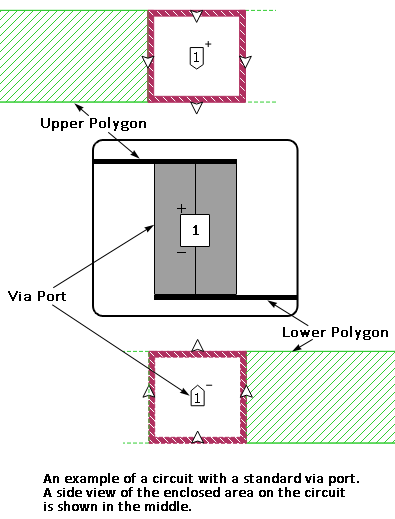A via port has the negative terminal connected to a polygon on a given circuit level and the positive terminal connected to a second polygon on another circuit level. A via port can also have the negative terminal connected to the top or bottom of the box. An example of this port type on a via polygon is shown below.

Unlike all other ports, em cannot de-embed via ports. However, in a circuit which contains a combination of via ports and other port types, the other port types can still be de-embedded. Em will automatically identify all of the other ports present in the circuit and de-embed them, but skip de-embedding the via ports.
The example file “stackedpatch” has an example of a via port used in a patch antenna. This example file can be found in the .Sonnet example files
In most cases where you need grounded ports, your first choice would be to use co-calibrated ports (as discussed in Co-Calibrated Internal Ports), especially since it is possible to accurately de-embed co-calibrated ports. The most common case where a via port would be used is when you wish to attach a port between two adjacent levels in your circuit. Another application is when you want to include the inductance of the via used as a port such as is common for feeding a patch antenna.
You cannot apply reference planes to via ports, since it is not possible for em to de-embed them.